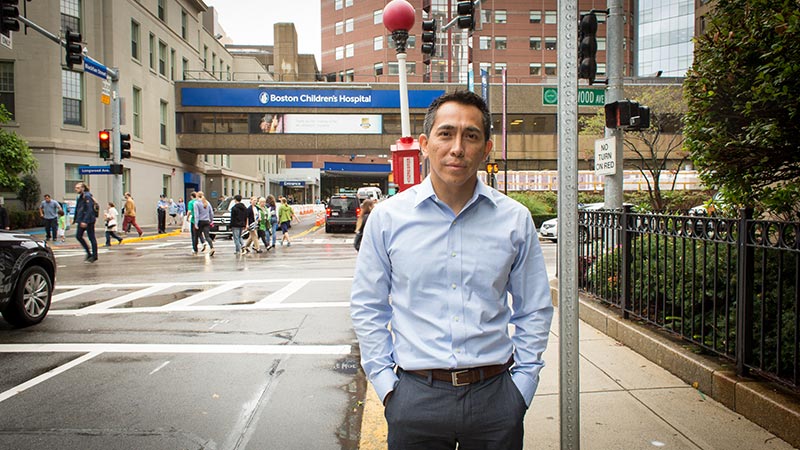Fernando Camargo doesn’t believe in comfort zones. “Whenever I have people starting in my lab, I tell them that they need to think of new biological questions, as opposed to just pursuing what others have started,” he says. “Try to be as original, as creative, as innovative as possible. I think that’s really the only way to make significant steps forward.”
Fernando would know. He grew up on a farm in Arequipa, Peru, which sparked his initial love for biology. His interest grew when he learned about DNA in high school, and how it determined both the similarities and differences among organisms. In order to pursue his dream of being a scientist, however, he knew he would have to be the first in his family to leave not just his city, but his country as well.
The University of Arizona in Tucson offered Fernando a full scholarship for his undergraduate studies, and he started there in 1997. It wasn’t entirely roses—he wished he knew more Latino scientists, and the language barrier posed some difficulties—but working in a laboratory was “a dream come true,” he says. And in a lab, he found, language barriers could be overcome with the “scientific currency,” he says. “Your ideas.”
If ideas are currency, Fernando is a rich man. Although relatively young, he has already revolutionized the field several times: While a fellow at the prestigious Whitehead Institute for Biomedical Research, he developed a technique for “barcoding” individual blood stem cells and their progeny, allowing researchers to track, for the first time, virtually every circulating blood cell in a living organism.
Prior to this, blood cells had only been studied in an isolated, artificial environment. With his barcoding technique, however, Fernando noticed that, contrary to previously thought, most blood cells were not generated by blood stem cells; instead, they were produced from progenitor cells, which descended from blood stem cells but were more abundant and long-lived. This raised the possibility of developing treatments that would improve the safety and efficiency of blood transfusions.

Now, as an associate professor at Boston’s Children Hospital and the Harvard University, Fernando is hopeful that his research will pave the way to other treatments for diseases too. He has worked extensively with the Hippo pathway, a group of genes that regulate tissue growth. These genes play a crucial role in determining symmetry and growth in tissues, by sending signals to cells to stop growing once they have reached a “check point,” he says. Cancer cells, on the other hand, do not respond to such signals, and Fernando is excited about the possibility of developing drugs that target this pathway in cancer cells to inhibit their growth.
And on the other side of the coin, Fernando says, there is the possibility of using the same pathway in the aid of regenerative medicine, by manipulating the genes to encourage growth in cells isolated from a patient, which could then be reintroduced. It would be a personalized treatment, without the risk of immune rejection.
These are just some of the possibilities that have been uncovered as a result of Fernando’s research. With his wealth of originality, creativity, and innovation, however, we are sure that there will be more.